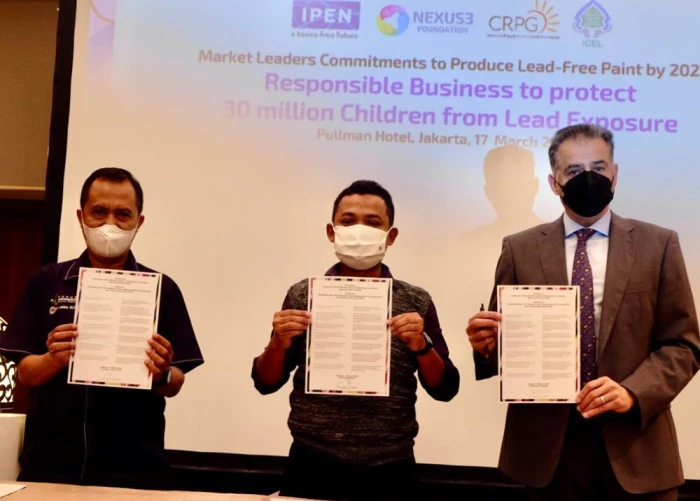
Lead Free Paint Commitment – Nexus3

Lead is a heavy metal notorious for impeding brain development in children. Ironically, paint colors that contain the highest levels of lead are often bright, such as red, yellow, orange, green, and blue, commonly found in children’s playgrounds.
A 2013 study published by the United States National Institute of Health (NIH) estimated the economic cost of childhood lead exposure in Indonesia at around USD 37.9 billion per year. This exposure is linked to an estimated cumulative loss of 16 million IQ points attributed to lead paint. Currently, about 36 million children, or approximately 12.2% of the population, are at risk.
In 2019, Mowilex launched a campaign to ensure that its products were lead-free and supported regulations restricting lead use to protect Indonesian children’s health. Production of our Cat Kayu dan Besi products containing more than 90 ppm of lead was halted. Additionally, in Q4 of 2021, Mowilex distributors were provided with lead-free paints for products exceeding the maximum limit, completely free of charge.
In 2021, Mowilex was the first and one of three paint manufacturers in Indonesia to sign a letter of commitment during the “Market Leaders Commitments to Produce Lead-Free Paint by 2023” conference, led by Nexus3, IPEN, CPRG, ICEL.
From 2022 to 2023, we engaged with Nexus3, the International Pollution Elimination Network (IPEN), and Institut Teknologi Bandung (ITB) to assess lead exposure and its impact on paint manufacturing workers. Lead paint poses a significant health risk that often goes unnoticed, affecting over a million children and causing irreversible harm such as reduced intelligence, learning disabilities, and behavioral issues. Adults are also at risk; exposure can lead to high blood pressure, headaches, dizziness, impaired motor skills, fatigue, and memory loss. The danger is not limited to visible paint chips; even small amounts of lead dust, which can be easily inhaled or ingested, are hazardous. Once lead poisoning occurs, its effects are lifelong and irreversible.*
The study collected various samples to assess workplace exposure risks, including indoor air, dust lead levels, intravenous blood, inhaled lead dust, and lead absorption from skin contact. Respondents were divided into two groups: directly exposed and indirectly exposed. There are 12 of our production workers volunteered to participate in this critical study.
Read our ESG Report to learn more about the result of this study.
Learn more about our commitment to eliminate lead in paint:

